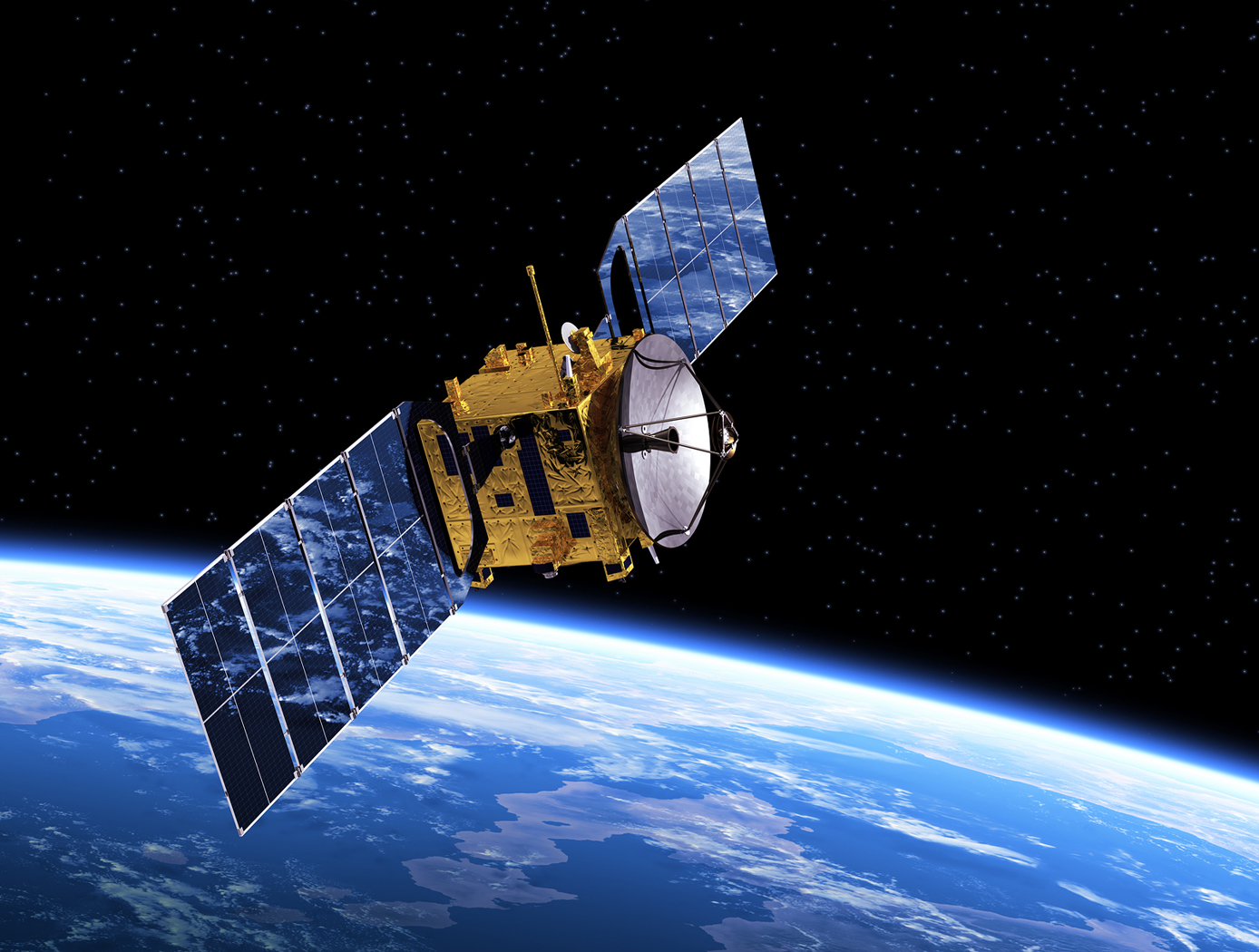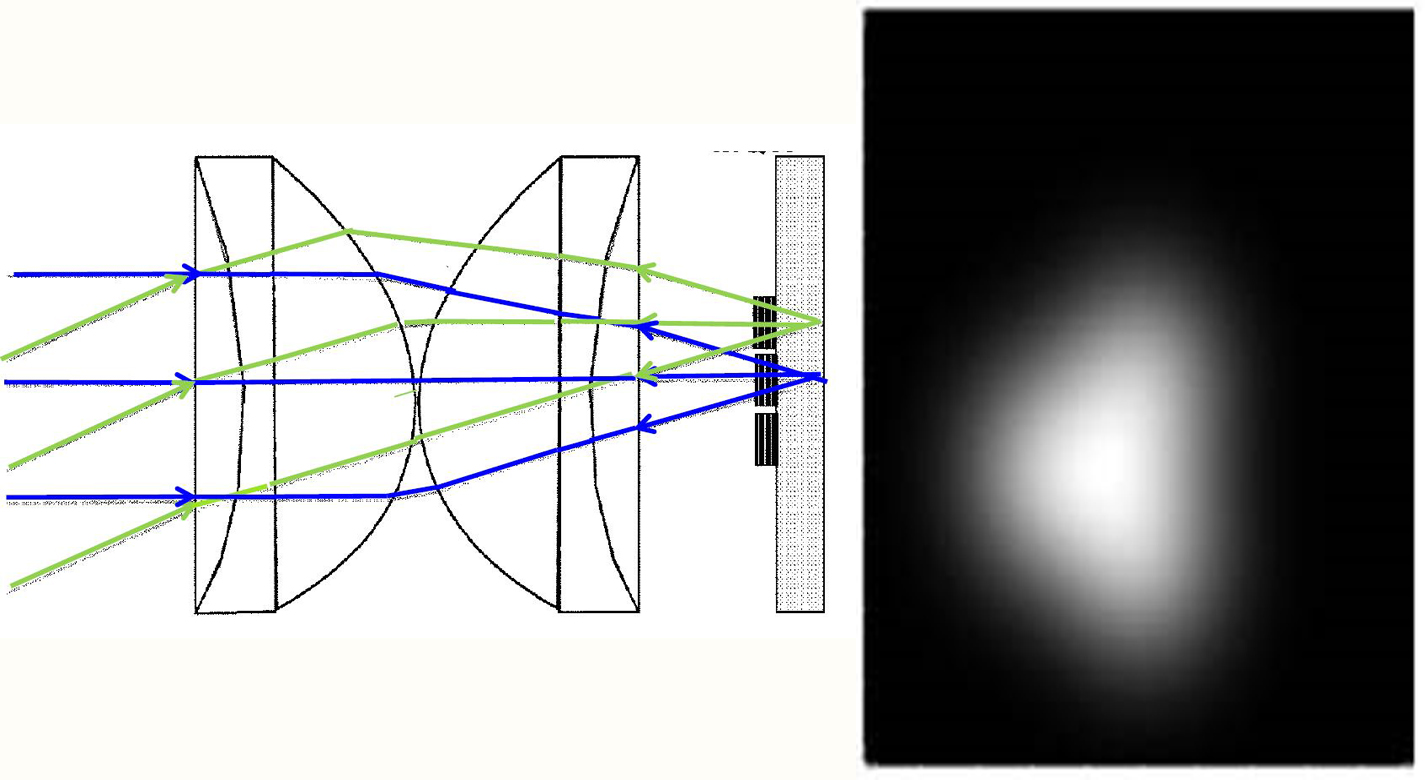Space Optical Communications Using Laser Beams
communications
Space Optical Communications Using Laser Beams (TOP2-248)
New method for optical data transmissions from satellites using laser arrays for laser beam pointing
Overview
NASA has developed a new laser beam pointing technology for use in space optical communications. With further development, possible applications include communications from the Earth to spacecraft in Earth orbit and in deep space, such as at the moon and Mars. A possible application is to the Artemis Program for CubeSats in low-Lunar Orbit (LLO). Current architectures use dynamical systems, (i.e., moving parts, e.g., fast-steering mirrors (FSM), and/or gimbals,) to turn the laser to point to the ground terminal and possibly use vibration isolation platforms (VIP). This patented technology from NASA Ames uses a combined lens system and a vertical-cavity surface-emitting laser (VCSEL)/Photodetector Array. This static system has the potential to replace the current dynamic systems and VIP, dependent on studies for the particular application. Laser beam pointing is very challenging for low-Earth Orbit (LEO), including science missions. Computer simulations using this design have been made for an application to a CubeSat in LEO.
The Technology
This invention provides a new method for optical data transmissions from satellites using laser arrays for laser beam pointing. The system is simple, static, compact, and provides accurate pointing, acquisition, and tracking (PAT). It combines a lens system and a vertical-cavity surface-emitting laser VCSEL)/Photodetector Array, both mature technologies, in a novel way for PAT. It can improve the PAT system's size, weight, and power (SWaP) in comparison to current systems. Preliminary analysis indicates that this system is applicable to transmissions between satellites in low-Earth orbit (LEO) and ground terminals. Computer simulations using this design have been made for the application of this innovation to a CubeSat in LEO. The computer simulations included modeling the laser source and diffraction effects due to wave optics. The pointing used a diffraction limited lens system and a VCSEL array. These capabilities make it possible to model laser beam propagation over long space communication distances. Laser beam pointing is very challenging for LEO, including science missions. Current architectures use dynamical systems, (i.e., moving parts, e.g., fast-steering mirrors (FSM), and/or gimbals) to turn the laser to point to the ground terminal, and some use vibration isolation platforms as well. This static system has the potential to replace the current dynamic systems and vibration isolation platforms, dependent on studies for the particular application. For these electro-optical systems, reaction times to pointing changes and vibrations are on the nanosecond time scale, much faster than those for mechanical systems. For LEO terminals, slew rates are not a concern with this new system.


Benefits
- Minimal maintenance required
- Components are simple, static, and reliable
- Increase in communications performance
- Compact, with no moving parts
- Does not need a vibration isolation platform
Applications
- CubeSat communications - Artemis Program, CubeSats in LLO
- Spacecraft industry
- Space communication: - Deep space optical communications (DSOC) - Optical multiple access (OMA)
- Communication between a constellation of close satellites
Technology Details
Peter M. Goorjian, "A new laser beam pointing method using laser arrays", Paper 10910-51, Conference 10910, Free-Space Laser Communications XXXI, SPIE Photonics West 2019, San Francisco, California, February 2-7, 2019
https://www.spiedigitallibrary.org/conference-proceedings-of-spie/10910/109101F/A-new-laser-beam-pointing-method-using-laser-arrays/10.1117/12.2506303.full
Goorjian, P. M., "A New Laser Beam Pointing Method Using Laser Arrays" NASA/TM-2018-58815, November 2018
https://ntrs.nasa.gov/archive/nasa/casi.ntrs.nasa.gov/20190002843.pdf
https://www.spiedigitallibrary.org/conference-proceedings-of-spie/10910/109101F/A-new-laser-beam-pointing-method-using-laser-arrays/10.1117/12.2506303.full
Goorjian, P. M., "A New Laser Beam Pointing Method Using Laser Arrays" NASA/TM-2018-58815, November 2018
https://ntrs.nasa.gov/archive/nasa/casi.ntrs.nasa.gov/20190002843.pdf
Similar Results

Fine-pointing Optical Communication System Using Laser Arrays
A new method is described for optical data transmissions from satellites using laser arrays for fine pointing of laser beams that use body pointing. It combines a small lens system and a VCSEL/Photodetector Array in a novel way to provide a fine pointing capability for laser beams that are pointed by body pointing of a CubeSat. As Fig. 1 shows, an incoming laser beam (green or blue, with rightward arrows), transmitted from a ground terminal, enters the lens system, which directs it to an element of the pixel array (gray rectangle). Each element, or pixel, consists of a VCSEL component/photodetector pair. The photodetector detects the incoming beam, and the VCSEL component returns a modulated beam to the lens system (green or blue, with leftward arrows), which sends it to the ground terminal. As the incoming beam changes direction, e.g., from the blue to the green incoming direction, this change is detected by the adjacent photodetector, and the laser paired with that photodetector is turned on to keep the outgoing laser beam on target. The laser beams overlap so that the returning beam continues to point at the ground terminal. The VCSEL component may consist of a single VCSEL or a cluster of VCSELs. Figure 2 shows the propagation of two overlapping laser beams. The system can very accurately point finely focused diffraction-limited laser beams. Also, simultaneous optical multiple access (OMA) is possible from different transceivers within the area covered by the laser array. For this electro-optical system, reaction times to pointing changes and vibrations are on the nanosecond time scale, much faster than mechanical fine pointing systems.

On-demand, Dynamic Reconfigurable Broadcast Technology for Space Laser Communication
NASA Goddard Space Flight Center has developed a configurable phase mirror system that can address likely obstacles in space optical communications. Through using miniature adjustable mirrors and programmed phase delays to diffract a single communication beam, numerous diffracted beams can be sent to other satellites in various directions for communication and tracking. The initial laser beams wave profile can be dynamically regulated through a fast Fourier transform (FFT) so that when it reaches its desired destination, it forms an intended illuminated spot at the target satellite. Since all the diffracted beams share the same phase mirror, the antenna gain needed to broadcast these beams does not require a multiplied aperture.

LIDAR System Noise Reduction
State of the art space-based LIDARs typically require a telescope with sufficient area to increase the return signal on the detector to levels above the noise floor of the detectors. Two major drivers of the signal-to-noise ratio (SNR) on the detectors are the laser output energy and the round trip distance traveled by the laser signal. The SNR on the detectors can be increased by increasing the telescope reflector area or by decreasing the system noise. If these techniques are not an option, this method can be used to separate stray light from polarized laser light in the LIDAR system and improve the SNR.
The method includes generating a beam of azimuthally polarized or OAM light utilizing an optical transmitter comprising a laser light source. The method includes providing an optical receiver including optical sensors at a focal plane with a photon sieve that produces a ring pattern on the focal plane corresponding to a laser return signal. The ring pattern comprises azimuthally polarized or OAM light that is transmitted by the transmitter and reflected towards the receiver. The photon sieve is utilized to cause stray light that is not polarized to cluster centrally, and away from the ring pattern created by the LIDAR signal. This technology could also be used with space based and terrestrial LIDAR for encrypted line of sight communications. The unique revolution frequencies of the LIDAR make any attempt to intercept the communication pointless for those who don't know the specific mode of the source.
The lidar system also has use cases for short range navigation for Urban Air Mobility (UAM) vehicles providing input as to whether there is significant enough clear air turbulence on a given path as to be dangerous to an aerial vehicle.

Optical Head-Mounted Display System for Laser Safety Eyewear
The system combines laser goggles with an optical head-mounted display that displays a real-time video camera image of a laser beam. Users are able to visualize the laser beam while his/her eyes are protected. The system also allows for numerous additional features in the optical head mounted display such as digital zoom, overlays of additional information such as power meter data, Bluetooth wireless interface, digital overlays of beam location and others. The system is built on readily available components and can be used with existing laser eyewear. The software converts the color being observed to another color that transmits through the goggles. For example, if a red laser is being used and red-blocking glasses are worn, the software can convert red to blue, which is readily transmitted through the laser eyewear. Similarly, color video can be converted to black-and-white to transmit through the eyewear.

Dual S-band and Ka-band High Gain Antenna
The circularly polarized antenna features an integrated prime-fed S-band and Cassegrain-based Ka-band reflector system. The Cassegrain primary and secondary reflectors are specially shaped for optimal Ka-band gain, while a frequency selective surface on the secondary reflector provides reflectivity at Ka-band, and acts as a transparent dielectric radome for the S-band feed antenna. Design innovations include an improved S-band feed antenna and cross-polarization compensation, improved Ka-band horn, and special
shaping of the secondary reflector for ease of fabrication.
The technology improves upon prior S-band feed antenna designs to provide mechanical robustness and low cross-polarization over a wide field of view. It also improves the front-to-back ratio, providing much higher signal radiated forward, over an increased bandwidth as well. The Ka-band feed horn is based on a prior NASA innovation, the standard Potter horn, but in this innovation has significantly lower sidelobe level performance. This is achieved by using a modified smooth s-curved interior horn profile rather the the typical conical/cylindrical form typical of the standard Potter horn design. The smooth interior wall is also easier to fabricate than alternative corrugated wall designs. Additionally, a cross-polarization cancellation cup is integrated with the Ka-band horn geometry, with the cup being placed around the neck of the horn in the form of a collar, allowing the two to be fabricated together.



